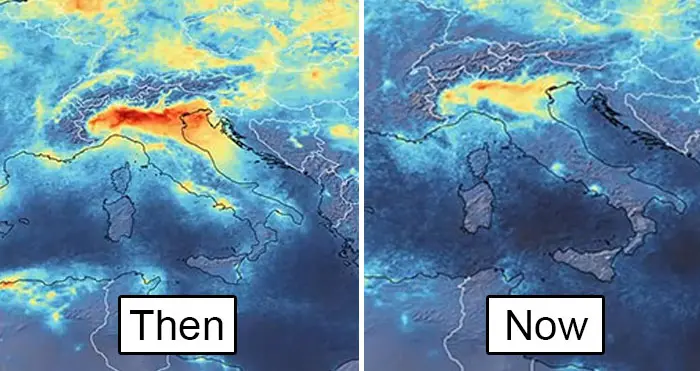The emergence of the COVID-19 pandemic has been affecting our lives in more ways than we could ever possibly imagine. In just a few months, we’ve seen how the number of confirmed cases rose drastically. In line with that, the death toll has also been growing exponentially in some parts of the world. So, in hopes of containing the outbreak, most affected countries have decided to subject themselves to coronavirus quarantine.
Sure, it’s particularly difficult to maintain a positive outlook during these trying times. With studies on potential vaccines and treatments still underway, it’s impossible to predict the end of it just yet. However, that doesn’t necessarily mean that nothing good can ever come from this pandemic. In fact, scientists have been seeing some positive impact in recent days. Although it might not be what the majority of us have been praying for.
Scientists have observed a somehow positive effect of the coronavirus quarantine, particularly in Italy
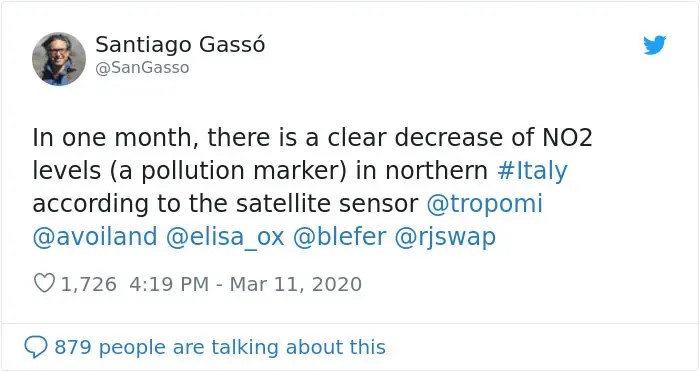
Just recently, the European Space Agency (ESA) has observed that nitrogen dioxide (NO2) levels have been significantly dropping in Italy. Accordingly, data from the Copernicus Sentinel-5P satellite suggest a decline in NO2 emissions, particularly in the country’s northern part. Essentially, this means that Italy’s air quality has been relatively improving, following the imposition of a nationwide lockdown to contain the coronavirus spread.
“Copernicus Sentinel-5P Tropomi is the most accurate instrument today that measures air pollution from space.”— Josef Aschbacher, ESA’s Director of Earth Observation Programmes
Satellite data have shown a gradual decline in NO2 concentration starting February 14th
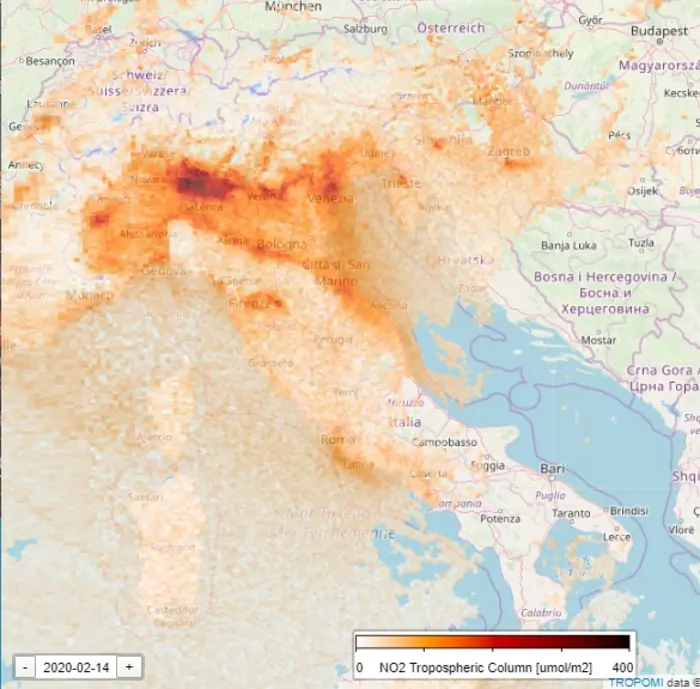
The decline has become even more evident in the succeeding weeks…
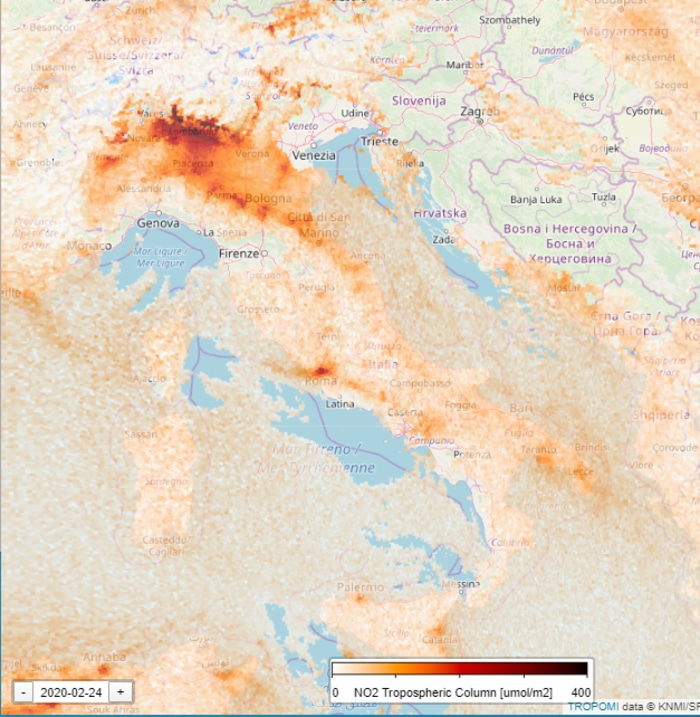
…and in the following month
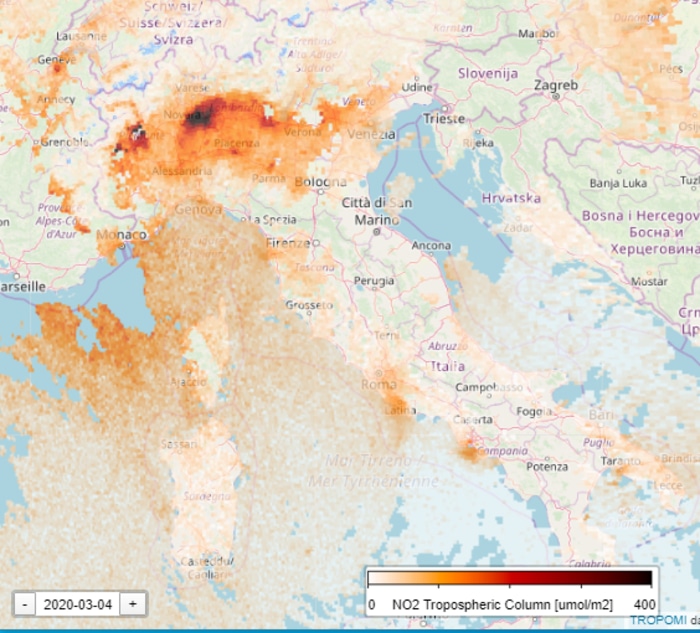
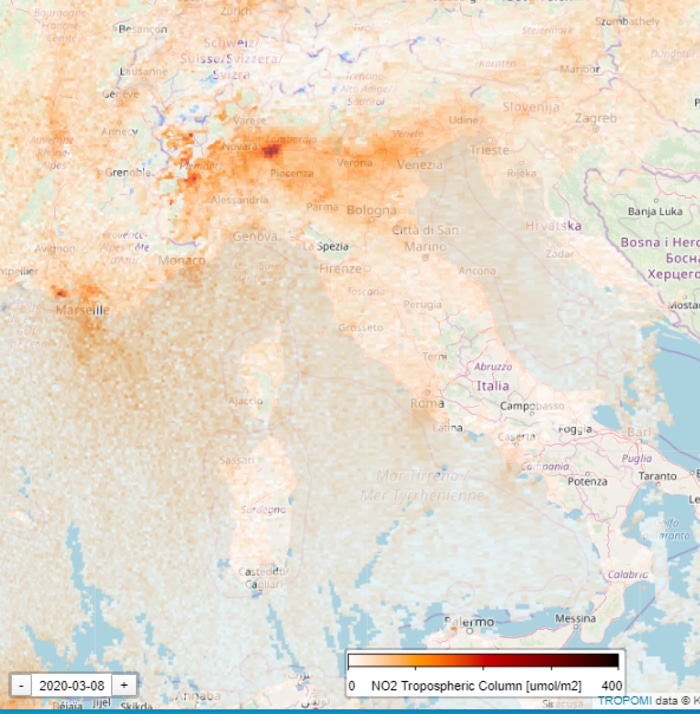
ESA’s reports have shown that the decline in NO2 concentrations is “particularly evident” over the Po Valley in northern Italy.
“Although there could be slight variations in the data due to cloud cover and changing weather, we are very confident that the reduction in concentrations that we can see, coincides with the lockdown in Italy causing less traffic and industrial activities.”—Claus Zehner, ESA’s Copernicus Sentinel-5P mission manager
Meanwhile, Santiago Gassó, a research associate at NASA, took to Twitter to share the results of the satellite sensor. He noted that in a month, there has been “a clear decrease of NO2 levels” in northern Italy. In addition, he pointed out that day selection is also an important factor in drawing the comparison.
To arrive at a more accurate result, Gassó made a day-to-day comparison between two weekend days, one-month apart
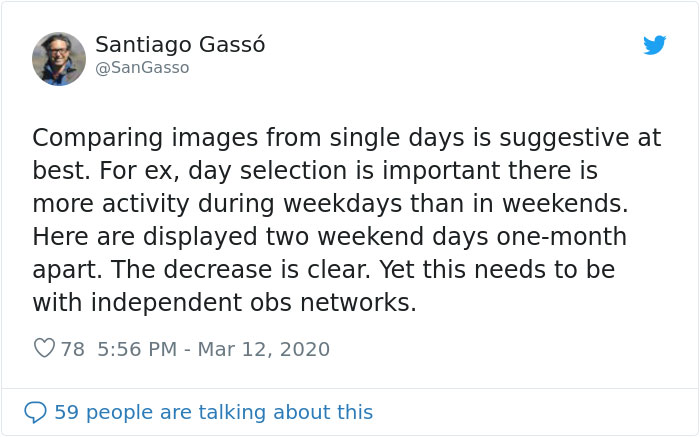
The following map displays the NO2 levels on February 8th, Saturday
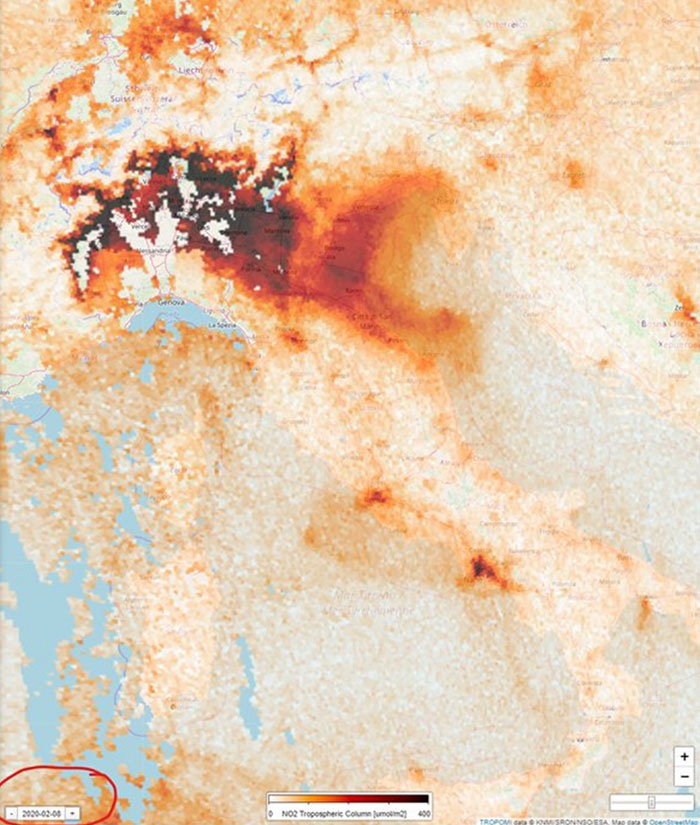
Conversely, here is a map that shows the NO2 levels on March 7th, Saturday
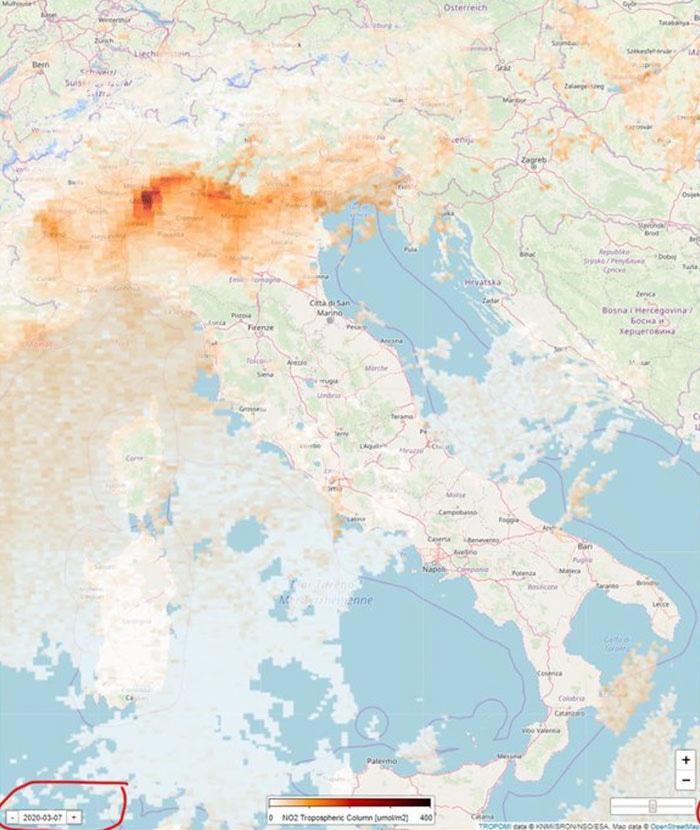
Meanwhile, here’s a timelapse video from the ESA that suggests the same results
Surprisingly, even the world-famous canals of Venice are starting to run clear amidst the coronavirus quarantine
Come ruscelli pic.twitter.com/58RscdVHgI
— Albert Folaz (@FolinAlberto) March 14, 2020
Here’s how people reacted to the unexpected effect of the coronavirus quarantine







Source: European Space Agency

